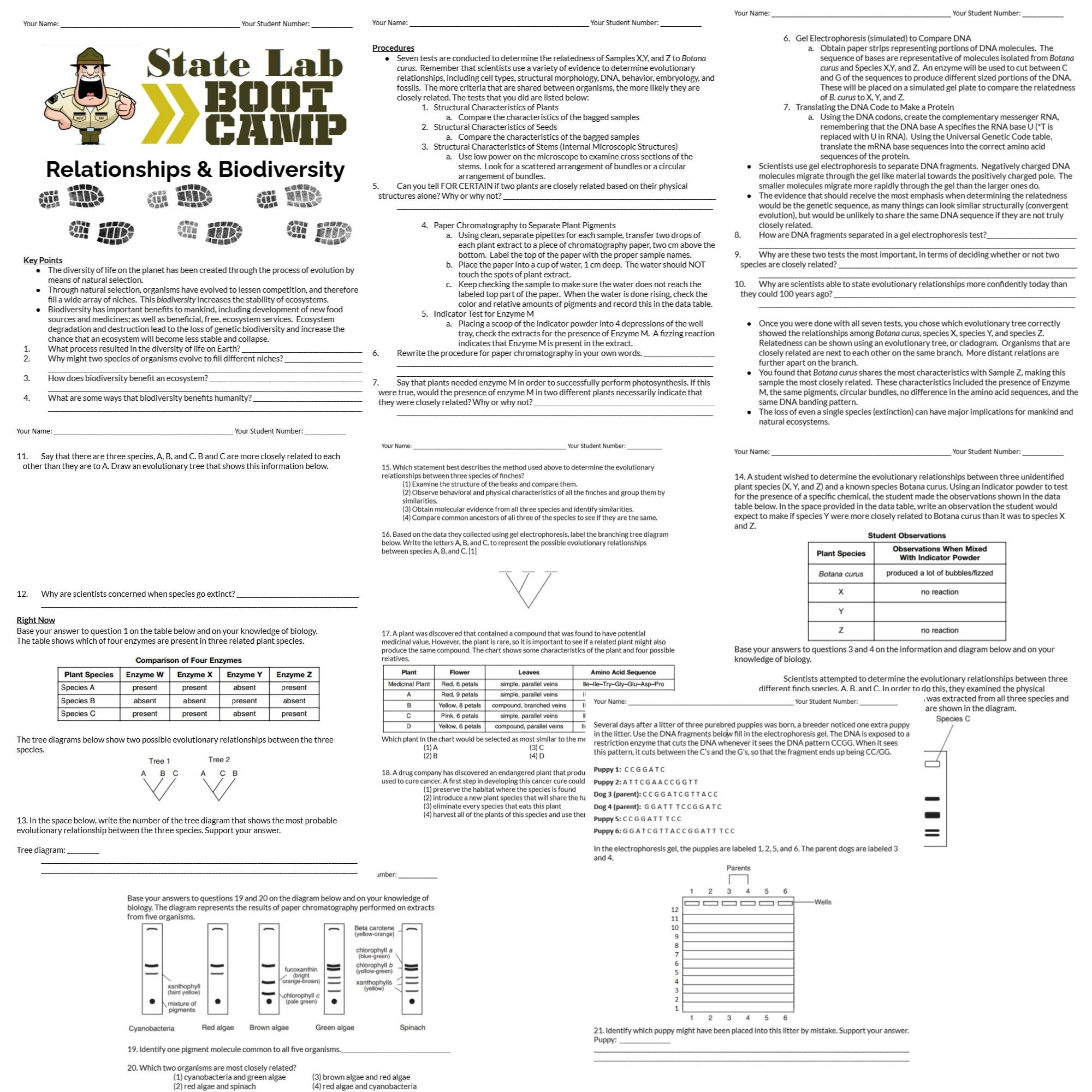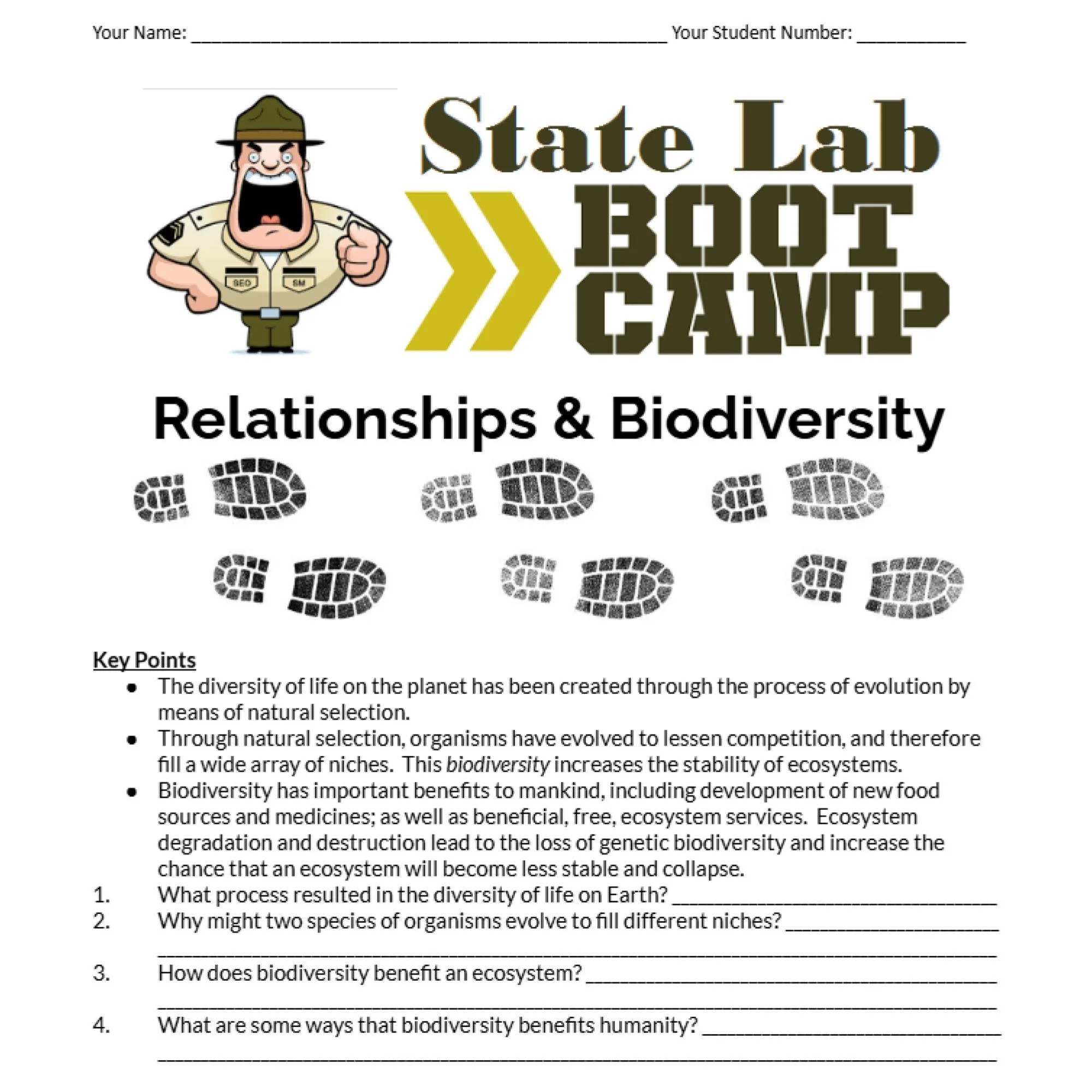



State Lab Boot Camp: Relationships and Biodiversity
Master 'Relationships and Biodiversity' with Our Engaging Review!
🔍 Seamless Exam Preparation: Empower your students with this comprehensive and delightful review tailored for the NY State required lab, 'Relationships and Biodiversity.' After thorough content review, targeted questions, and interactive activities, they'll be fully equipped to conquer part D of the Living Environment exam.
📚 Trusted Resources: Curated from a blend of old Regents exams, insights from fellow educators, and original content, this review guarantees a well-rounded understanding of the lab's core concepts.
📖 Key Features:
In-depth Content Review: Dive into the intricacies of the lab, ensuring a solid grasp of fundamental principles.
Targeted Questions: Address essential queries that pave the way for success in the exam.
Engaging Activities: Interactive tasks keep learning dynamic and enjoyable.
🌟 Why Choose Our Review?
🎯 Focused Learning: Designed exclusively for 'Relationships and Biodiversity,' ensuring precise preparation.
📝 Proven Source Material: Gathered from reliable and diverse sources for a robust review experience.
🌈 Engaging Design: Infused with charm to inspire and motivate students in their learning journey.
🚀 Empower Student Success: Equip your students with the knowledge and confidence they need to excel in their Living Environment exam. Download our review now and witness their triumph!
Join the Lesson Laboratory and Teach for Tomorrow!
NGSS Performance Expectations
HS-LS4-1: Communicate scientific information that common ancestry and biological evolution are supported by multiple lines of evidence.
HS-LS4-2: Construct an explanation based on evidence that evolution results from multiple mechanisms.
HS-LS4-5: Evaluate evidence supporting claims that changes in environmental conditions may result in increases or decreases in species numbers.
MS-LS4-2: Apply scientific ideas to construct an explanation for the anatomical similarities and differences among modern organisms and between modern and fossil organisms.
Science and Engineering Practices (SEPs)
Analyzing and interpreting data
Developing and using models
Constructing explanations and designing solutions
Crosscutting Concepts (CCCs)
Patterns
Cause and effect
Systems and system models
Master 'Relationships and Biodiversity' with Our Engaging Review!
🔍 Seamless Exam Preparation: Empower your students with this comprehensive and delightful review tailored for the NY State required lab, 'Relationships and Biodiversity.' After thorough content review, targeted questions, and interactive activities, they'll be fully equipped to conquer part D of the Living Environment exam.
📚 Trusted Resources: Curated from a blend of old Regents exams, insights from fellow educators, and original content, this review guarantees a well-rounded understanding of the lab's core concepts.
📖 Key Features:
In-depth Content Review: Dive into the intricacies of the lab, ensuring a solid grasp of fundamental principles.
Targeted Questions: Address essential queries that pave the way for success in the exam.
Engaging Activities: Interactive tasks keep learning dynamic and enjoyable.
🌟 Why Choose Our Review?
🎯 Focused Learning: Designed exclusively for 'Relationships and Biodiversity,' ensuring precise preparation.
📝 Proven Source Material: Gathered from reliable and diverse sources for a robust review experience.
🌈 Engaging Design: Infused with charm to inspire and motivate students in their learning journey.
🚀 Empower Student Success: Equip your students with the knowledge and confidence they need to excel in their Living Environment exam. Download our review now and witness their triumph!
Join the Lesson Laboratory and Teach for Tomorrow!
NGSS Performance Expectations
HS-LS4-1: Communicate scientific information that common ancestry and biological evolution are supported by multiple lines of evidence.
HS-LS4-2: Construct an explanation based on evidence that evolution results from multiple mechanisms.
HS-LS4-5: Evaluate evidence supporting claims that changes in environmental conditions may result in increases or decreases in species numbers.
MS-LS4-2: Apply scientific ideas to construct an explanation for the anatomical similarities and differences among modern organisms and between modern and fossil organisms.
Science and Engineering Practices (SEPs)
Analyzing and interpreting data
Developing and using models
Constructing explanations and designing solutions
Crosscutting Concepts (CCCs)
Patterns
Cause and effect
Systems and system models